For me, white is the colour of summer here, our ‘Snow in summer’!
Last month I had a most unexpected sighting at Fraser Avenue, a carpet of tiny, white, four-petalled Dwarf Boronia flowers, Boronia nana var. nana.
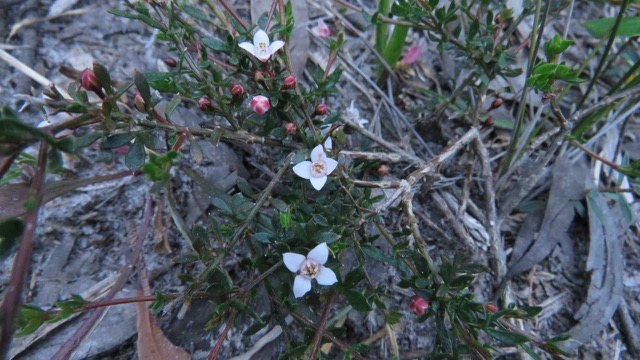
Dwarf Boronia
Slashing has ensured that these low-growing plants are quite prostrate, and clearly the rain had encouraged an unusual amount of growth. On close inspection the beautiful waxy flowers had a delightful aroma, and were actually a delicate pale pink.
Also there, and in many other places, were masses of Milkmaids, Burchardia umbellata, swaying in the winds. These lilies are now seeding and the brown, dry, three-sided capsules are also interesting to see and touch.

Milkmaid
Prickly Teatree, Leptospermum continentale, has been putting on a fine display in the heathlands and woodlands. The five-petalled flowers grow thickly over the trees, followed by the distinctive woody capsules. The leaves of some species were used as a tea substitute, hence the name. The stems and wood were used by Aborigines to make spears and pegs.

Prickly Teatree
A range of daisy-bushes with white flowers, but of varying heights, may be seen. These include Twiggy Daisy-bush, Olearia ramulosa var. ramulosa, and the more unusual Silky Daisy-bush, O. myrsinoides.

Twiggy Daisy-bush
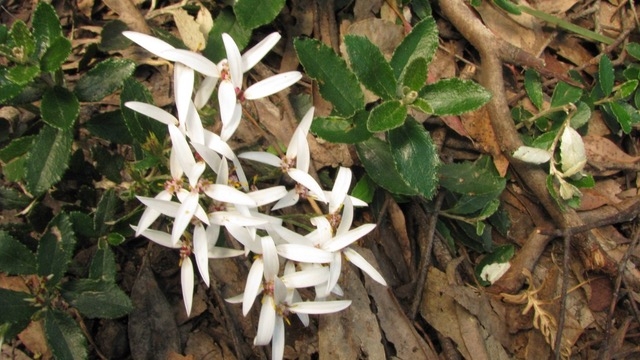
Silky Daisy-bush
Philippa Hesterman has successfully cultivated one specimen of these in the Angair garden. It has flower-heads of an uneven appearance with two to four white ray-florets and dark stiff, holly-like leaves with a white, silky undersurface.
Two larger plants with white flowers may be found in moist gullies, particularly at Moggs Creek. Musk Daisy- bush, Olearia argophylla, has large clusters of small white daisies, and large leaves also with a white, silky undersurface.
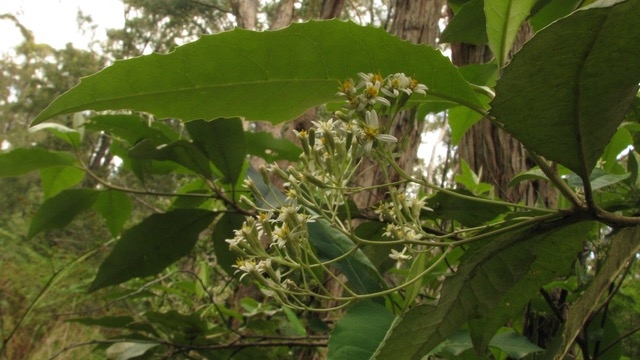
Musk Daisy-bush
Look for our own seasonal tree, the Victorian Christmas Bush, Prostanthera lasianthos var. lasianthos, with its distinctive white flowers, and fragrant leaves.

Tree Everlasting, Ozothamnus ferrugineus, a tall bush, is quite common in moist areas along the coast with massed clusters of tiny, scented white flowers.

Tree Everlasting
It can be confused with Common Cassinia, C.aculeata.

Common Cassinia
The leaves on this are finer than the Tree Everlasting, and the crowded flower-heads of tubular florets have a flatter appearance.
After all the rain, small groundcovers are likely to be on show in moist forests, especially at Moggs Creek. These include the two Starworts with pretty small white daisy-like flowers:Forest Starwort, Stellaria flaccida, and Prickly Starwort, Stellaria pungens.
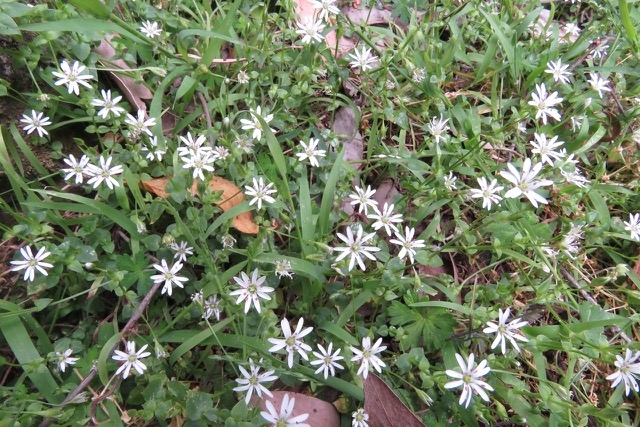
Forest Starwort
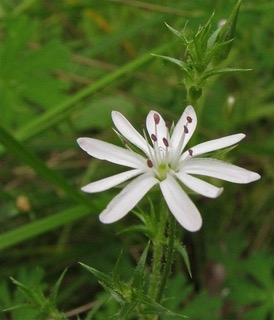
Prickly Starwort
The leaves are the most distinctive difference.
Look for the uneven, star-like flowers of the even smaller and mat-like Matted Pratia, Lobelia pedunculata.
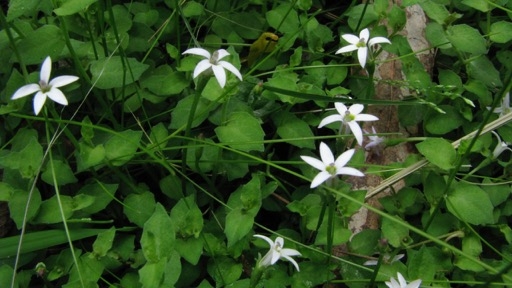
Matted Pratia
The highlight of summer for me is always the common Sweet Bursaria, Bursaria spinosa subsp. spinosa, with its massed clusters of creamy, star-like flowers, and buzzing, bustling insects.
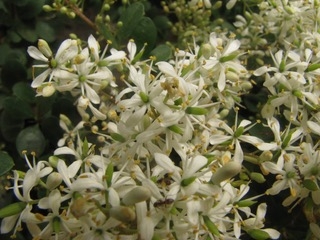
Sweet Bursaria
Its sweet fragrance and nectar attract many insects, especially bees and butterflies. Maybe you will be fortunate and see the rare Bright Copper butterfly, Paralucia aurifer, which I understand is particularly attracted to it. However beware of its sharp spines, which create a very safe habitat for small birds.
A great place to be on hot days is beside a watercourse such as the Allen Noble Sanctuary at Aireys Inlet. Search in and near the water’s edges for White Purslane, Neopaxia australasica, a delightful aquatic herb. It has small, mostly single, five- petalled flowers.
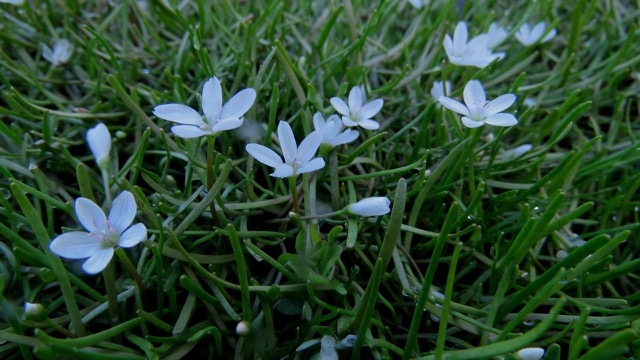
White Purslane
It is rare in our area, and not described in Flowers of Anglesea and Aireys Inlet.
Ellinor Campbell